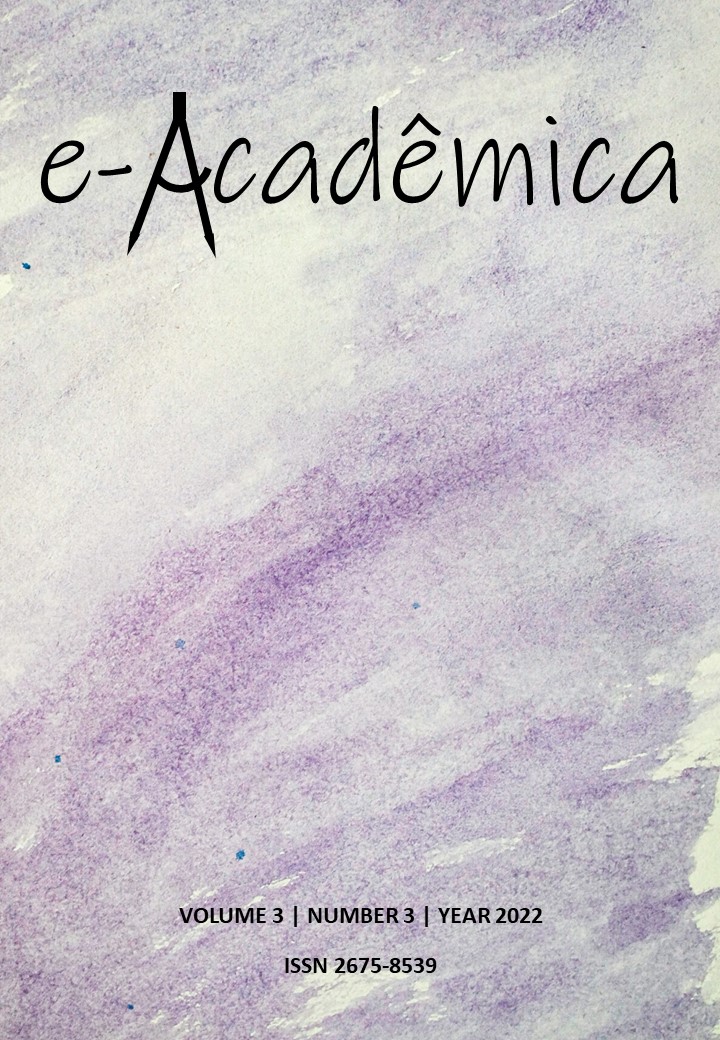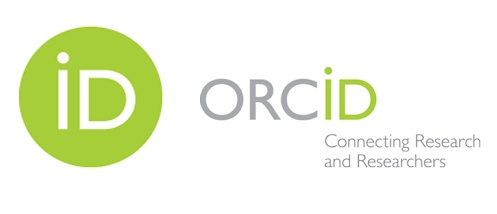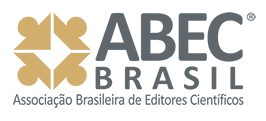Presença de Streptococcus mutans resistente a antimicrobianos em mulheres com obesidade/sobrepeso atendidas em um núcleo de odontologia
DOI:
https://doi.org/10.52076/eacad-v3i3.365Palavras-chave:
Cárie dentária; Streptococcus mutans; Resistência bacteriana.Resumo
A cárie dentária pode ser definida como uma perda localizada dos tecidos dentários calcificados. Assim como a CD, a obesidade e sobrepeso podem ter origens multifatoriais, bem como alimentação inadequada e alto consumo de carboidratos fermentáveis. O excesso de peso apresenta riscos e consequências graves à saúde. Elevados índices de perda dentária em mulheres adultas podem ser atribuídos a uma má higiene bucal e alto consumo de carboidratos Na microbiota oral, Streptococcus mutans é responsável pelo desenvolvimento da cárie dentária (CD). Essas bactérias metabolizam vários carboidratos produzindo metabólitos ácidos. A presença de S. mutans resistente a antimicrobianos pode ser um problema para a saúde humana e o uso inadequado de antibióticos favorece a resistência e o aumento de bactérias resistentes. O presente trabalho tem como objetivo avaliar a presença de S. mutans resistentes a antimicrobianos em mulheres com obesidade/sobrepeso atendidos em um núcleo de odontologia. Para isso, foi realizada a coleta de saliva não estimulada, a qual foi processada para isolamento de S. mutans e para a realização de teste de sensibilidade a compostos antimicrobianos por disco-difusão. Foi possível identificar presença de S. mutans em 18% das amostras (n=3), das quais uma amostra apresentou resistência aos antibióticos cefotaxima, clindamicina e ceftriaxona, duas amostras apresentaram sensibilidade aos antibióticos. Conclusão: São necessários novos estudos que contribuam com melhores resultados sobre o S. mutans e a resistência a antimicrobianos em mulheres com obesidade/sobrepeso visto que o S. mutans se faz presente na microbiota oral humana, podendo ocasionar lesões dentárias.
Referências
Al-Shamahy, H. A. (2019). Efficacy of some Antibiotics against Streptococcus Mutans Associated with Tooth decay in Children and their Mothers. Online Journal of Dentistry & Oral Health, 2(1). https://doi.org/10.33552/ojdoh.2019.02.000530
Araujo, D. S., Klein, M. I., Scudine, K. G. de O., de Sales Leite, L., Parisotto, T. M., Ferreira, C. M., Fonseca, F. L. A., Perez, M. M., & Castelo, P. M. (2020). Salivary microbiological and gingival health status evaluation of adolescents with overweight and obesity: A cluster analysis. Frontiers in Pediatrics, 8, 429. https://doi.org/10.3389/fped.2020.00429
Bortoli, F. R., Moreira, M. A., Moretti-Pires, R. O., Botazzo, C., & Kovaleski, D. F. (2017). Percepção da saúde bucal em mulheres com perdas dentárias extensas. Saúde e Sociedade, 26(2), 533–544. https://doi.org/10.1590/s0104-12902017162160
Bowen, W. H., Burne, R. A., Wu, H., & Koo, H. (2018). Oral biofilms: Pathogens, matrix, and polymicrobial interactions in microenvironments. Trends in Microbiology, 26(3), 229–242. https://doi.org/10.1016/j.tim.2017.09.008
BrCAST – Brazilian Committee on Antimicrobial Susceptibility Testing. (2022). Tabelas de pontos de corte para interpretação de CIMs e diâmetros de halos. https://brcast.org.br/wp-content/uploads/2022/09/Tabela-pontos-de-corte-clinicos-BrCAST-12-abr-22.pdf
Chen, X., Daliri, E. B.-M., Tyagi, A., & Oh, D.-H. (2021). Cariogenic biofilm: Pathology-related phenotypes and targeted therapy. Microorganisms, 9(6), 1311. https://doi.org/10.3390/microorganisms9061311
De Lorenzi, D. R. S., Basso, E., Fagundes, P. de O., & Saciloto, B. (2005). Prevalência de sobrepeso e obesidade no climatério. Revista brasileira de ginecologia e obstetricia: revista da Federacao Brasileira das Sociedades de Ginecologia e Obstetricia, 27(8), 479–484. https://doi.org/10.1590/s0100-72032005000800008
Gil, A. C. (2017). Como Elaborar Projetos de Pesquisa, 6ª edição. Grupo GEN.
Granville-Garcia, A. F., de Menezes, V. A., de Lira, P. I., Ferreira, J. M., & Leite-Cavalcanti, A. (2008). Obesity and dental caries among preschool children in Brazil. Revista de Salud Publica (Bogota, Colombia), 10(5), 788–795. https://doi.org/10.1590/s0124-00642008000500011
Hochman, B., Nahas, F. X., Oliveira Filho, R. S. de, & Ferreira, L. M. (2005). Desenhos de pesquisa. Acta cirurgica brasileira, 20(suppl 2), 2–9. https://doi.org/10.1590/s0102-86502005000800002
Inaba, T., Obana, N., Habe, H., & Nomura, N. (2020). Biofilm Formation by Streptococcus mutans is Enhanced by Indole via the Quorum Sensing Pathway. Microbes and Environments, 35(2). https://doi.org/10.1264/jsme2.ME19164
Jorge, A. (2012). Microbiologia E Imunologia Oral. Elsevier Editora Ltda.
Keerthana, R., & Gheetha. (2017). Antibiogram profile of streptococcus mutans isolated from the patients with dental caries. International Journal of Current Advanced Research, 6, 7194–7196. https://doi.org/10.24327/ijcar.2017.7196.1098
Kim, Y.-H., & Lee, S. Y. (2020). Antibiotic resistance of viridans group streptococci isolated from dental plaques. Biocontrol Science, 25(3), 173–178. https://doi.org/10.4265/bio.25.173
Krzyściak, W., Jurczak, A., Kościelniak, D., Bystrowska, B., & Skalniak, A. (2014). The virulence of Streptococcus mutans and the ability to form biofilms. European Journal of Clinical Microbiology & Infectious Diseases: Official Publication of the European Society of Clinical Microbiology, 33(4), 499–515. https://doi.org/10.1007/s10096-013-1993-7
Lemos, J. A., Palmer, S. R., Zeng, L., Wen, Z. T., Kajfasz, J. K., Freires, I. A., Abranches, J., & Brady, L. J. (2019). The biology of Streptococcus mutans. Microbiology Spectrum, 7(1). https://doi.org/10.1128/microbiolspec.GPP3-0051-2018
Li, Y.-H., Tang, N., Aspiras, M. B., Lau, P. C. Y., Lee, J. H., Ellen, R. P., & Cvitkovitch, D. G. (2002). A quorum-sensing signaling system essential for genetic competence in Streptococcus mutans is involved in biofilm formation. Journal of Bacteriology, 184(10), 2699–2708. https://doi.org/10.1128/JB.184.10.2699-2708.2002
Loureiro, R. J., Roque, F., Teixeira Rodrigues, A., Herdeiro, M. T., & Ramalheira, E. (2016). O uso de antibióticos e as resistências bacterianas: breves notas sobre a sua evolução. Revista portuguesa de saúde pública, 34(1), 77–84. https://doi.org/10.1016/j.rpsp.2015.11.003
Menegaz, A. M., Silva, A. E. R., & Cascaes, A. M. (2018). Educational interventions in health services and oral health: systematic review. Revista De Saude Publica, 52.
Muniz, R. M. C. (2011). Condições bucais e isolamento de Streptococcus mutans em pacientes submetidos à cirurgia bariátrica. [Dissertação de Mestrado]. Universidade Federal do Ceará.
Nagasawa, R. (2020). Potential risk of spreading resistance genes within extracellular-DNAdependent biofilms of Streptococcus mutans in response to cell envelope stress induced by subMICs of bacitracin. Applied and environmental microbiology.
Oliveira, A. C. de, & Silva, R. S. da. (2009). Desafios do cuidar em saúde frente à resistência bacteriana: uma revisão. Revista Eletrônica de Enfermagem, 10(1). https://doi.org/10.5216/ree.v10i1.8011
Pitts, N. B., Twetman, S., Fisher, J., & Marsh, P. D. (2021). Understanding dental caries as a non-communicable disease. British Dental Journal, 231(12), 749–753. https://doi.org/10.1038/s41415-021-3775-4
Qiu, W., Zhou, Y., Li, Z., Huang, T., Xiao, Y., Cheng, L., Peng, X., Zhang, L., & Ren, B. (2020). Application of antibiotics/antimicrobial agents on dental caries. BioMed Research International, 2020, 5658212. https://doi.org/10.1155/2020/5658212
Rezazadeh, F., Azad, A., Khorami, A., Modaresi, F., & Rezaie, Z. (2020). Evaluation of antibiotic resistance pattern in dental bacteremia detected by multiplex PCR technique. BioMed Research International, 2020, 9502959. https://doi.org/10.1155/2020/9502959
Salman, H. A., Senthilkumar, R., Imran, K., & Selvam, K. P. (2017). Isolation and Typing of Streptococcus mutans and Streptococcus sobrinus from Caries-active Subjects. Contemporary Clinical Dentistry, 8(4), 587–593. https://doi.org/10.4103/ccd.ccd_610_17
Silva, A. E. R., Menezes, A. M. B., Demarco, F. F., Vargas-Ferreira, F., & Peres, M. A. (2013). Obesity and dental caries: systematic review. Revista de Saude Publica, 47(4), 799–812. https://doi.org/10.1590/S0034-8910.2013047004608
Silva, D. F. A. (2018). Streptococcus orais: perfil de resistência antimicrobiana. Dissertação (Mestre em Medicina Dentária). Dissertação.
Silva, R. R. da, & Seroli, W. (2022). Odontologia aplicada em unidade terapia intensiva. E-Acadêmica, 3(1), e083194. https://doi.org/10.52076/eacad-v3i1.94
Singh, S. (2007). Pharmacology for Dentistry. New Age International.
Waclaw, B. (2016). Advances in experimental medicine and biology. 915, 49–67.
Yagiela, J. A., Dowd, F. J., Johnson, B., Mariotti, A., & Neidle, E. A. (2010). Pharmacology and therapeutics for dentistry (6o ed). Mosby.
Yeo, W.-Z., Lim, S.-P., & Say, Y.-H. (2018). Salivary cariogenic bacteria counts are associated with obesity in student women at a Malaysian university. Asia Pacific Journal of Clinical Nutrition, 27(1), 99–106. https://doi.org/10.6133/apjcn.032017.14
Downloads
Publicado
Como Citar
Edição
Seção
Licença
Copyright (c) 2022 Daniela Santos Chaves; Melissa Almeida Fontes; Karina Sarno Paes Alves Dias; Aline Teixeira Amorim; Fernanda Santos Portela

Este trabalho está licenciado sob uma licença Creative Commons Attribution 4.0 International License.
Autores que publicam nesta revista concordam com os seguintes termos:
1) Autores mantém os direitos autorais e concedem à revista o direito de primeira publicação, com o trabalho simultaneamente licenciado sob a Licença Creative Commons Attribution que permite o compartilhamento do trabalho com reconhecimento da autoria e publicação inicial nesta revista.
2) Autores têm autorização para assumir contratos adicionais separadamente, para distribuição não-exclusiva da versão do trabalho publicada nesta revista (ex.: publicar em repositório institucional ou como capítulo de livro), com reconhecimento de autoria e publicação inicial nesta revista.
3) Autores têm permissão e são estimulados a publicar e distribuir seu trabalho online (ex.: em repositórios institucionais ou na sua página pessoal) a qualquer ponto antes ou durante o processo editorial, já que isso pode gerar alterações produtivas, bem como aumentar o impacto e a citação do trabalho publicado.










